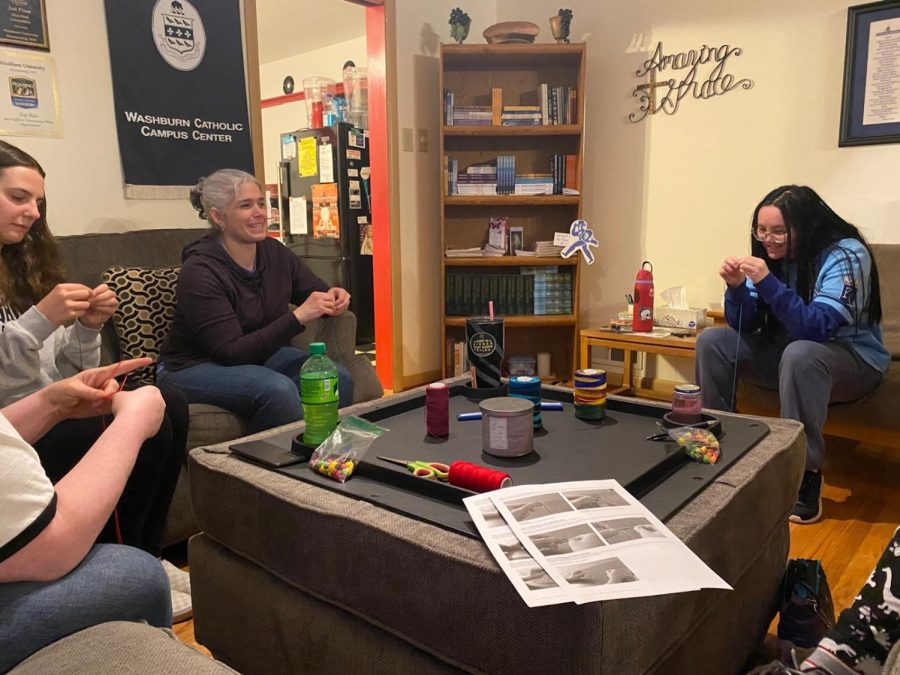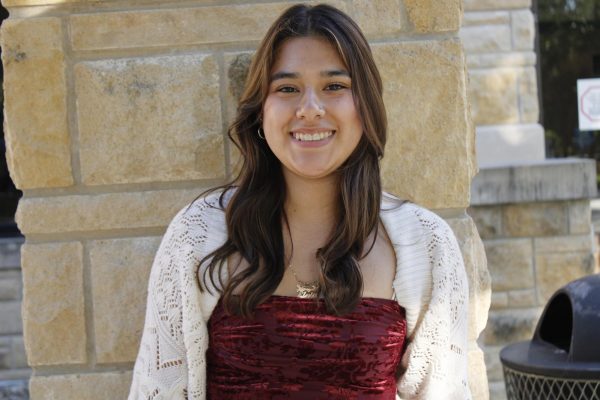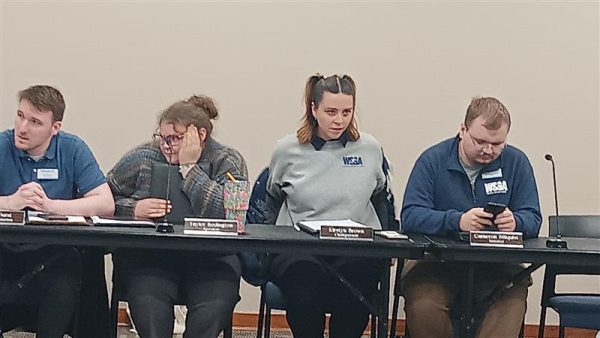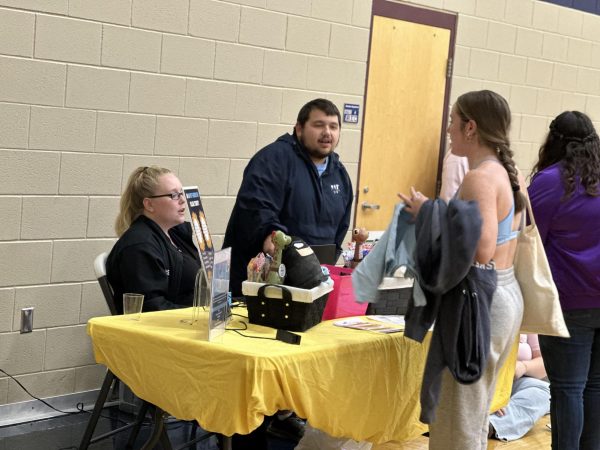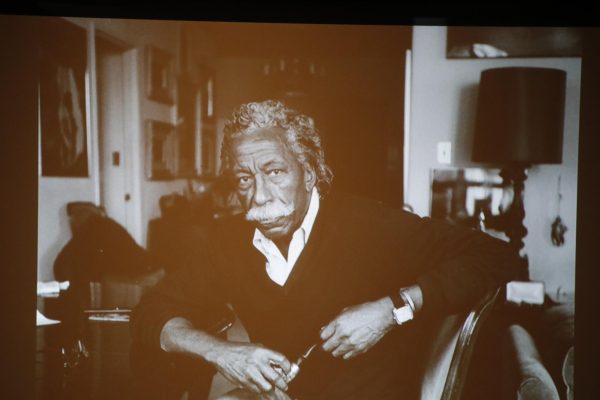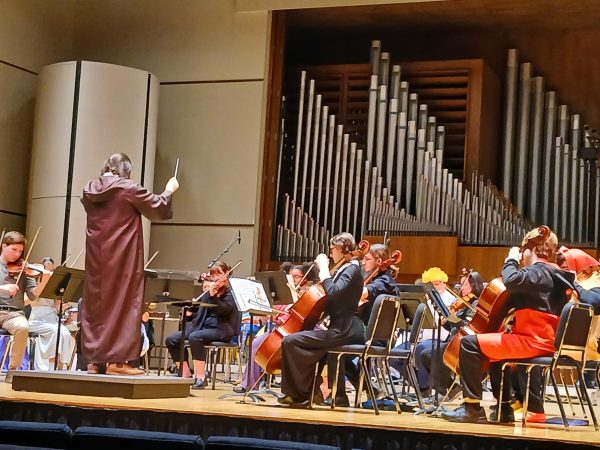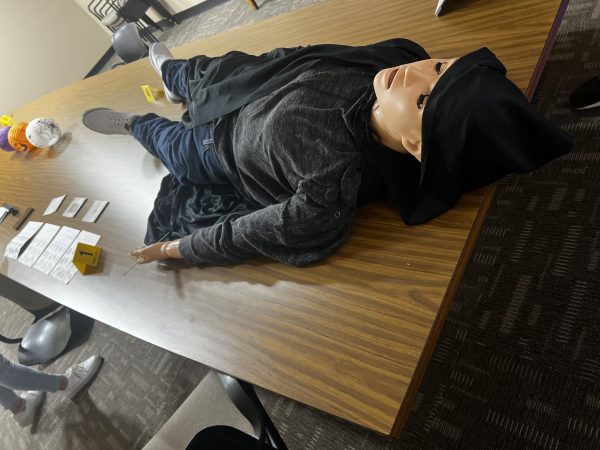Students learn how to make Catholic rosaries at recent God’s Bods event
Washburn students and God’s Bods members enjoying making rosaries. The event was held on March 22, where students made the knotted rosaries using nylon thread at God’s Bods Catholic Campus Center at Washburn University.
God’s Bods Catholic Campus Center at Washburn University conducted an event to make knotted rosaries Wednesday, March 22. Trinity Price, vice president of God’s Bods, demonstrated how to create rosaries out of nylon thread for the attendees.
Rosary is one of the most popular Roman Catholic devotions. The name “rosary,” also known as the Dominican Rosary, is from Latin and indicates “crown of roses” or “garland of roses.” It refers to a collection of prayers predominantly practiced in the Catholic Church and the actual string of knots or beads used to count the component prayers.
The event began by letting attendees pick the color and cutting the thread to about 20 feet. Using decades—sets of ten Hail Marys—Price directed participants to arrange their rosaries. Five decades were recited, with each decade offering an opportunity to meditate on one of the Mysteries of the Rosary, which reflect incidents in the life of Jesus Christ and his mother Mary.
The Rosary is a scripture-based prayer. At the start of the Rosary are the introductory prayers which are composed of one Apostle’s Creed, one Our Father, three Hail Mary’s and one Glory Be. The life events of Christ are the focal point of the Rosary Mysteries. The four sets of mysteries are Joyful, Sorrowful, Glorious and the Luminous, which was added by Saint John Paul II in 2002.
“We have scripture we meditate on each decade. Each of the mysteries correlates with scripture. The sorrowful mystery is the Agony in the garden. And so, for that decade, you’re kind of meditating on the idea of the garden,” Price said.
The Rosary is a devotion dedicated to the Virgin Mary. Praying is believed to be a powerful act that allows one to develop and strengthen relationships with God, and the Rosary provides the same reward. Using a string of beads during prayer has been shown to be an effective form of meditation. It can assist in focusing a person’s attention on the prayer itself, which can naturally lead to meditative prayer. Personalizing the mysteries of sacred scripture helps to foster a mindset of spiritual improvement, sin elimination and desiring additional grace through the sacraments.
The event was attended by several students and members of God’s Bods. The director of the God’s Bods Catholic Campus Center, Jessica Hammer, also attended the event.
“It is a meditation prayer. It encompasses all the parts of your body. I am going to try again. I think it’s going to take some practice,” Hammer said.
Eleanor Jones, a junior in history and the treasurer of God’s Bods, encouraged other students to partake in rosary-making events.
“If you enjoy praying the Rosary, but find yourself frequently using it. It would be interesting to learn how to create it,” Jones said.
Several students who participated in the rosary-making process said they enjoyed the process.
The gathering ended with a review of everyone’s handcrafted rosaries. Price then spoke on Catholic history and the traditional church before the Great Schism between the Orthodox and Catholic Churches. The Great Schism, also known as the East-West Schism, split Christendom into western (Latin) and eastern (Greek) branches, which became the Roman Catholic Church and the Eastern Orthodox Church, respectively.
The Great Schism arose from a complicated mix of theological and political tensions. One of the major religious differences between the western (Roman) and eastern (Byzantine) branches of the church was whether or not unleavened bread may be used for the sacrament of communion. The west favored the practice, while the east opposed it. Other points of contention in religion include the precise language of the Nicene Creed and the western assumption that priests should be celibate.
To learn more about God’s Bods and the Catholic Campus Centre click here to visit their website.
Edited by Aja Carter, Glorianna Noland
Your donation will support the student journalists of Washburn University. Your contribution will allow us to purchase equipment and cover our annual website hosting costs.



